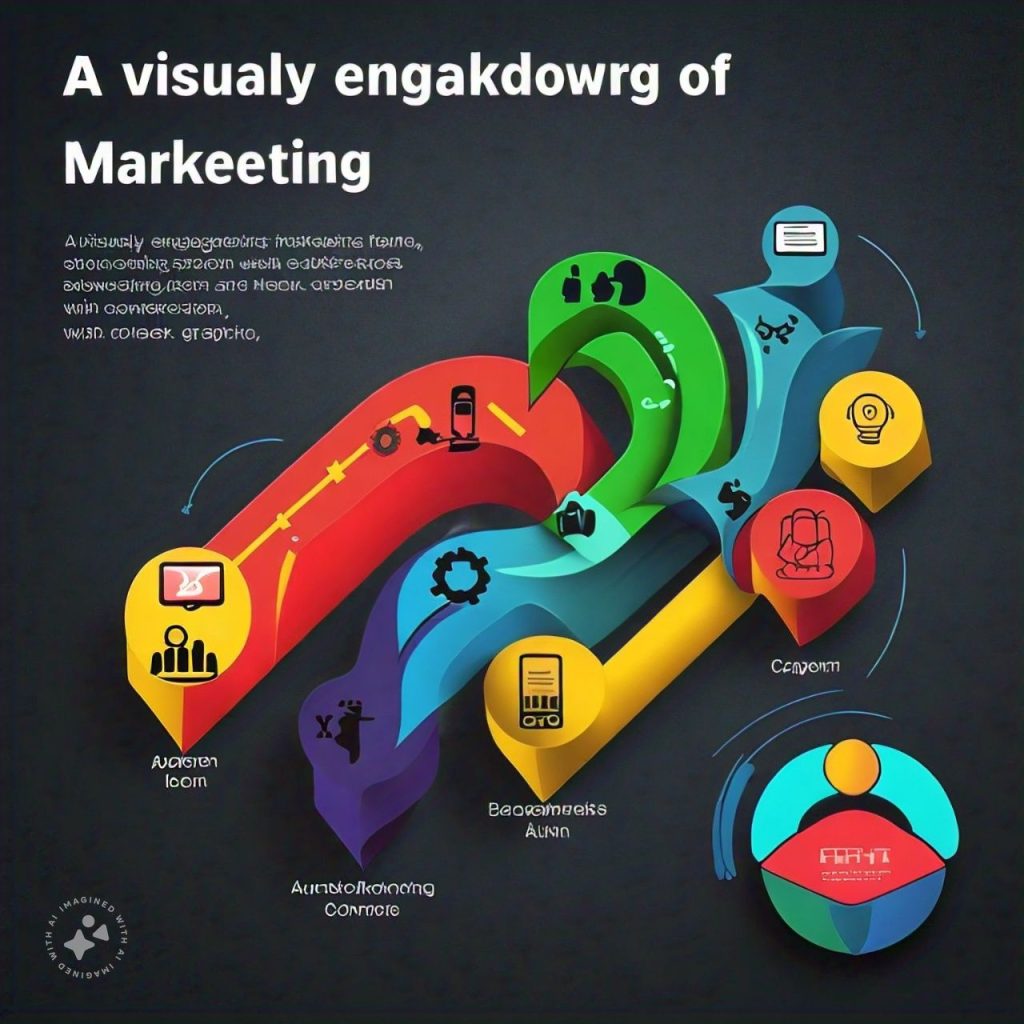Introduction: Why Marketing Strategies Matter More Than Ever
In today’s crowded marketplace, figuring out the right marketing strategies is more crucial than ever. The reality is that every business, whether it’s a startup or a giant corporation, needs an effective strategy to break through the noise, connect with its target audience, and drive growth. Without a clear plan, even the best products or services can go unnoticed, impacting the bottom line in big ways.
Marketing strategies aren’t one-size-fits-all; what works for a large enterprise may not work for a small business and vice versa. In this post, I’ll break down proven marketing strategies using real-world case studies, explaining what works, what doesn’t, and how you can implement these ideas to see results.
Let’s dive in!

Understanding Marketing Strategy Basics
What is a Marketing Strategy?
At its core, a marketing strategy is a plan that outlines how a business will attract and retain customers. It combines elements of market research, competitive analysis, and customer needs assessment to create a roadmap for reaching and engaging the target audience.
Why Your Marketing Strategy Matters
Without a clear marketing strategy, efforts often become scattered and less effective. By having a strategy, you ensure that all marketing efforts are coordinated and aligned toward achieving business goals.
The Problem: Common Marketing Challenges Businesses Face
Challenge 1: Standing Out in a Saturated Market
Many industries are saturated with businesses fighting for attention. From social media ads to influencer marketing, customers are exposed to thousands of ads daily. So, how can you make your message stand out?
Challenge 2: Choosing the Right Channels
With the rise of digital marketing, there are countless platforms for promoting products or services. But knowing where to focus your efforts — whether it’s on Facebook, Google, email marketing, or influencers — is tricky without clear guidance.
Challenge 3: Measuring Marketing ROI
Tracking results and measuring the return on investment (ROI) can be one of the biggest hurdles for marketers. If you’re investing in marketing but unsure of the results, it’s challenging to know which strategies are effective.
The Agitation: Why Ignoring These Challenges Can Hurt Your Business
Marketing isn’t just about creating catchy ads; it’s about connecting with your audience and building a brand. Ignoring marketing strategies or failing to update them can result in stagnant growth, lost customers, and wasted resources.
Here’s a fact: In a study conducted by HubSpot, 40% of marketers said that proving the ROI of their marketing activities was one of their top challenges. So, if you’re not tracking your ROI or optimizing your efforts, you could be losing a significant amount of revenue without even realizing it.

The Solution: Tried-and-Tested Marketing Strategies That Deliver Results
1. Content Marketing: Building Trust with Your Audience
What it Is
Content marketing involves creating valuable, relevant content to attract and engage your target audience. This strategy works particularly well for brands looking to build trust and educate their audience before pitching their products.
Case Study: HubSpot’s Blog Strategy
HubSpot’s content marketing strategy revolves around creating educational blog posts, eBooks, and guides that address specific challenges their customers face. By offering value through their content, HubSpot builds trust and positions itself as a thought leader in inbound marketing.
How You Can Do It
- Identify Common Pain Points: Think about your target audience’s challenges and create content that addresses them.
- Create Useful Resources: Blogs, videos, infographics, and eBooks work well for content marketing.
- Consistency is Key: Posting consistently helps maintain visibility.
2. Social Media Marketing: Building Connections
What it Is
Social media marketing involves using platforms like Facebook, Instagram, Twitter, and LinkedIn to engage with your audience, build brand awareness, and drive traffic to your website.
Case Study: Nike’s Instagram Strategy
Nike’s Instagram page is a fantastic example of engaging social media marketing. Nike doesn’t just post product images; it shares motivational stories, customer testimonials, and user-generated content that resonate with its audience. This approach humanizes the brand and creates a sense of community.
How You Can Do It
- Choose the Right Platforms: Identify where your audience spends most of their time.
- Engage with Followers: Respond to comments, messages, and interact with your audience.
- Post Relevant Content: Focus on content that reflects your brand’s personality and values.
3. Search Engine Optimization (SEO): Improving Visibility on Google
What it Is
SEO is the process of optimizing your website and content to rank higher on search engines like Google. Effective SEO can bring consistent, organic traffic to your website.
Case Study: Brian Dean’s Backlinko
Brian Dean, the founder of Backlinko, grew his blog by focusing heavily on SEO. He conducted thorough keyword research, optimized his content for Google, and built quality backlinks. His strategy led to Backlinko becoming one of the top-ranking sites for SEO-related queries.
How You Can Do It
- Conduct Keyword Research: Tools like Ahrefs and SEMrush can help identify high-value keywords.
- Optimize Your Website: Ensure your site is mobile-friendly, fast, and easy to navigate.
- Build Quality Backlinks: Focus on getting links from reputable websites in your industry.

4. Influencer Marketing: Leveraging Social Proof
What it Is
Influencer marketing involves collaborating with influencers (people with a large following) to promote your brand. It’s especially effective for targeting specific demographics.
Case Study: Daniel Wellington’s Influencer Strategy
The watch brand Daniel Wellington is known for its influencer marketing success. Instead of traditional advertising, they focused on partnering with influencers across social media. By doing so, Daniel Wellington generated high brand visibility and boosted sales among a younger demographic.
How You Can Do It
- Identify Relevant Influencers: Look for influencers who align with your brand values.
- Set Clear Goals: Decide if you’re looking for brand awareness, engagement, or conversions.
- Track Results: Monitor engagement and sales metrics to evaluate the campaign’s success.
5. Email Marketing: Nurturing Leads and Building Relationships
What it Is
Email marketing involves sending newsletters, updates, and promotional content directly to a subscriber’s inbox. This strategy works well for maintaining engagement and nurturing leads.
Case Study: Airbnb’s Personalized Email Campaigns
Airbnb uses data-driven email marketing to send personalized recommendations based on user preferences and past behaviors. This approach keeps Airbnb’s users engaged and more likely to book accommodations through their platform.
How You Can Do It
- Segment Your Audience: Group subscribers based on their interests, purchase history, or behavior.
- Personalize Your Emails: Address subscribers by their first name and tailor content to their preferences.
- Focus on Quality Content: Share updates, offers, or helpful tips rather than just promotions.

Key Takeaways for an Effective Marketing Strategy
- Understand Your Audience: Knowing who you’re targeting helps shape your messaging and approach.
- Consistency is Crucial: Successful marketing requires sustained efforts over time.
- Measure Results: Tracking KPIs and ROI ensures you’re making data-driven decisions.
- Adapt and Adjust: Marketing trends evolve, so staying flexible and adapting your strategy is vital.
Conclusion
Creating an effective marketing strategy isn’t about following trends or making flashy ads — it’s about understanding your audience and delivering value. By analyzing real-world case studies, I’ve shown that some of the most successful brands build trust, engage meaningfully, and provide consistent value. Now it’s your turn to apply these strategies, monitor results, and adjust your approach. The right marketing strategy can make all the difference in your business’s success
FAQs: Your Marketing Strategy Questions Answered
1. What is the most effective marketing strategy for small businesses?
For small businesses, content marketing and social media marketing are highly effective due to their low cost and high engagement potential. Start by building a blog and engaging with your audience on social media platforms where they’re most active.
2. How long does it take to see results from SEO?
SEO is a long-term strategy. It generally takes about 3-6 months to see noticeable results, depending on competition, your industry, and the quality of your SEO efforts.
3. Is influencer marketing worth it for all brands?
Not necessarily. Influencer marketing is most effective for brands targeting younger, social media-savvy audiences. If your product appeals to this demographic and you can find influencers who align with your brand, it can be a great strategy.
4. How can I measure the success of my marketing strategies?
Use metrics relevant to each strategy:
- For SEO, track organic traffic and keyword rankings.
- For social media, monitor engagement and follower growth.
- For content marketing, look at traffic and engagement with your posts.
5. What’s the difference between a marketing strategy and a marketing plan?
A marketing strategy is a high-level approach to achieving your business goals through marketing, while a marketing plan details the specific actions, campaigns, and tactics you’ll use to implement your strategy.






